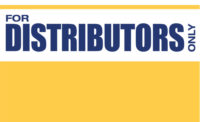Do reps close more deals when busy or idle?
Analytics can determine optimal sales capacity

There are plenty of examples of companies using data analytics to help boost sales and reduce costs. Similarly, doctors are enlisting analytics applications to diagnose disease more accurately, and athletes have tapped them to enhance performance. While improved computing capacity and specialized tools have enabled this performance, at the heart of it is human curiosity. Ultimately, using data analytics effectively requires the human element.
Consider the police department in Ontario’s Halton region, which encompasses four municipalities. The department developed a system that collects information from building security logs, officer activity records, cruiser GPS data, email messages and 911 phone calls. By organizing all that data, the police can predict where attention is most likely required and dispatch officers proactively, reducing wait times for citizens and idle time for officers. While it’s clear that software was key to making this happen, the initiative was championed by a few experienced police officers who foresaw a pattern in their assignments and collaborated with data scientists to turn their suspicions into a systematic model.
Tracking sales activity
Another business-related example: Do salespeople close more deals when they are busy or idle? This is not as intuitive as it might seem: Busy salespeople are typically an indication of high demand, which means the market is more receptive to the product -- making the close rate naturally higher. On the other hand, idle salespeople try harder on every opportunity they get in order to preserve their own earnings. There’s no clear answer to this: It probably varies by industry, geography and individual sales styles. Companies that electronically track sales activity from lead to close can use analytics tools to determine the optimal sales capacity level to maximize their closing rate and sell more without adding people.
Sports gambler Elihu Feustel bets millions of dollars on tennis every year based on a computer algorithm he’s built over the years, which looks at player statistics from 260,000 matches. Feustel claims it’s possible to double investments in a year through his method. He says he puts in a 60-hour week checking and improving his model, working with a computer programmer and a sports betting trader. At the heart of his use of analytics is Feustel’s belief in a correlation between past data and future outcomes and guidance to the programmer on where to look. Feustel will bet against a stronger player, but will never bet against his own algorithm.
Service optimization
One final example from Reliance Home Comfort, Canada’s No.1 provider of heating, cooling and water heater solutions to homeowners. Every year, the company services more than 350,000 customers who call about issues with their equipment. Most of the work is done the same day for customers who call in the morning and schedule an appointment for that afternoon, so the schedule constantly changes.
Reliance Home Comfort uses commercial software specialized in route optimization, which balances booked service orders and available capacity to optimize routing of technicians. The challenge was to determine future service demand to properly staff every shift. Many factors influence demand, such as weather, customer base growth, product mix, technician absenteeism and traffic congestion -- many of which are not predictable three weeks ahead, which is when technicians need to be warned they’ll be on duty.
By using data analytics tools, the company created a model that predicts capacity up to three months ahead, based largely on historical data. The model doesn’t get it right every time, but it’s drastically better than the manual process Reliance had before, and it gets ongoing enhancement by company analysts as they think of new correlations and program them in. This model has allowed Reliance to save costs and provide customers with a better experience, and it all started with a few people who believed that we should be able to use some of the data we already had to predict the future.
You could argue that humans are not necessary to establish correlations initially: A solid analytics tool armed with every possible piece of data the company has should find correlations on its own. Theoretically, that’s true, but practically, there’s no such thing as “every possible piece of data” — you don’t know what you need until you need it (or suspect you might need it). The information necessary to establish those correlations might be in unusual places — in Reliance’s case, for example, weather forecasts were a critical piece of the model, and that’s not in any of the company’s databases.
Having staffers who understand the business intimately and see potential patterns or correlations is the essential component to effective use of analytics. Tools are critical as well, but secondary. If you’re starting an analytics project, be sure to first find those people, keep them and pair them up with new talent to develop backups. A tool alone won’t cut it.
Looking for a reprint of this article?
From high-res PDFs to custom plaques, order your copy today!




